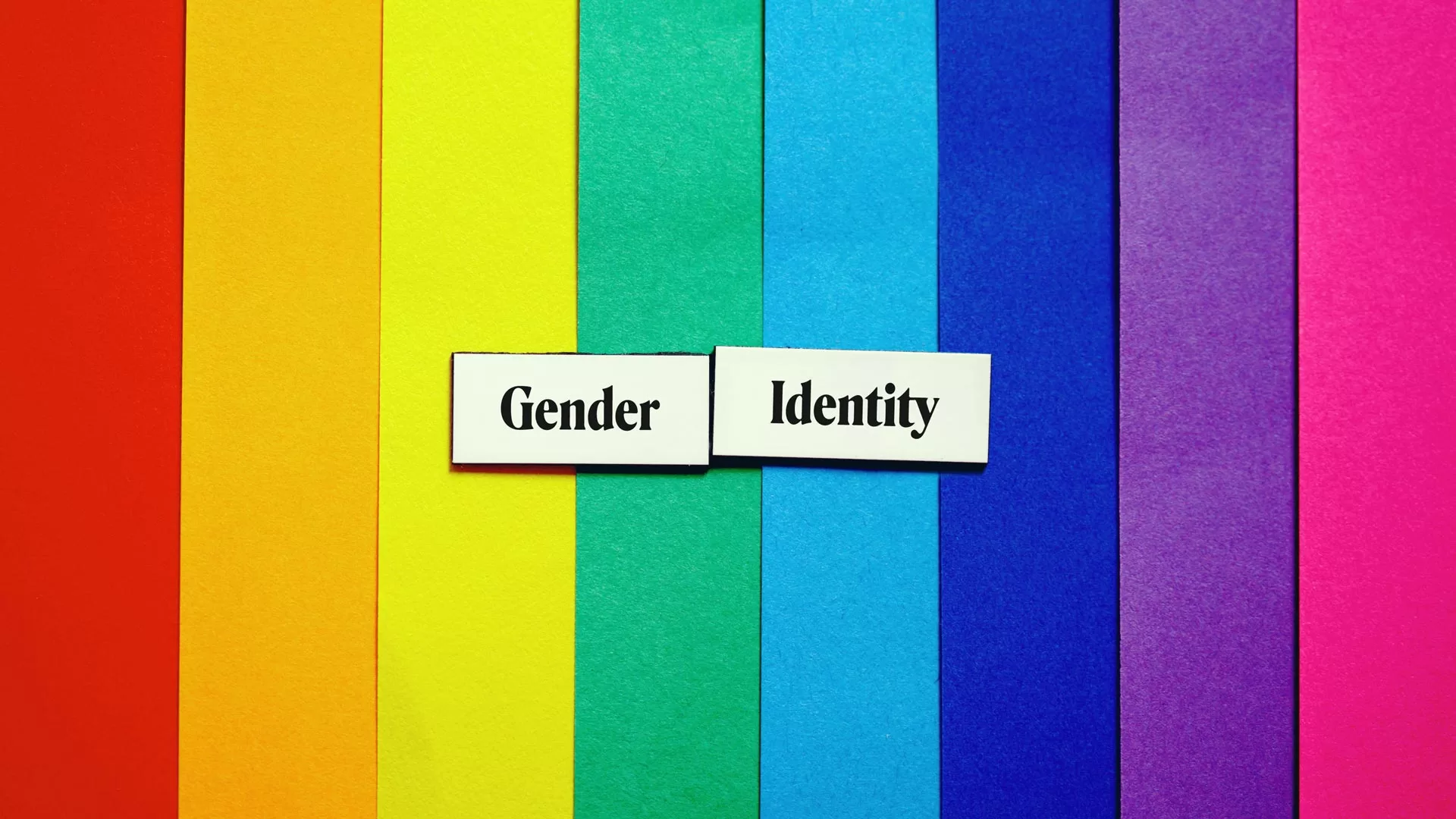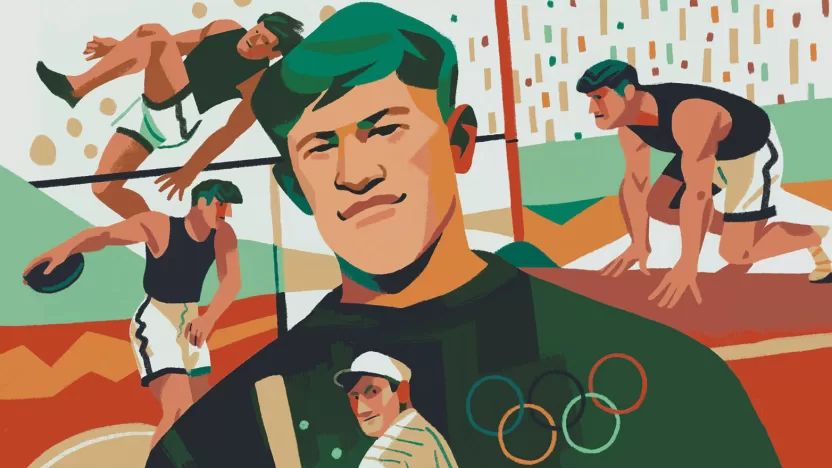A brief history of gender identity
A historical and cultural exploration of the concept of gender and its impact on modern society
by Ornella Sinigaglia

Artwork by MAIZE / Unsplash
Gender: a complex topic that only recently evolved beyond the dichotomy of sex. While some civilizations recognized a third gender well before the Western ones, the opportunity for people to openly define themselves and be recognized beyond the sex assigned at birth is a relatively new phenomenon. Why?
Because sex is linked to biological and physical traits of the body. Biologically, we distinguish between men, women, and intersex (those who share a variety of traits across the sexual divide). But traditionally, gender relates to the performance of roles, identities, and ideas surrounding masculine and feminine characteristics. It’s a phenomenon that appears in every place and historical moment we look into, a fundamental means by which we understand ourselves, our societies, and the worlds we live in. So there isn’t one, all-encompassing, history of gender.
Western travelers and anthropologists left ample records of the pre-colonial Incas who recognized Qariwarmi, a nonbinary, mixed-gender role; the two-spirit people, Indigenous North Americans who fulfill a traditional third-gender (or other gender-variant) ceremonial and occupy a specific social position in their cultures; or the Sakalava of Madagascar, an ethnic group that recognizes a third gender for boys seen to have feminine features or behaviors from a young age and therefore assume feminine gender roles in society. But inevitably, these paintings were drawn through the tinted, binary glasses of their Western authors. So let’s start at the root: how do we develop a history of gender in the Western world?
The word gender started circulating in academic discourse and broader cultural discussions around the midpoint of the twentieth century as everyday people began to push back openly and critically on the role that gender played in their lives. These conversations about gender and gender norm play crucial roles in the movements for LGBTQIA rights and visibility, civil rights, and feminist critique.
Millennia before we became sophisticated enough to go beyond two genders, some already embraced a fluid definition of sorts. In the second century AD, the Greek physician Galen noted: “Turn outward the woman’s, turn inward, so to speak, and fold double the man’s, and you will find the same in both in every respect.” The idea that male and female reproductive organs were basically two sides of the same coin persisted until the Reinassance, and gender was given a hierarchy and attached to ideas about certain inner qualities.
The idea that biological sex and gender could be fluid also existed in parts of Western Europe. Before the eighteenth century and the rise of Enlightenment thinking, there was a theory that men’s and women’s reproductive organs could belong to a common sex, even though they were assigned to different gendered roles. So there was one sex, but two genders.
In Albania, the strict patrilinear and patrilocal societal model defined by the Code of Lekë Dukagjini in the 1400s had women treated as family property. According to these laws, used in Northern Albania and Kosovo until the twentieth century, women can’t smoke, wear watches, or vote in local elections. They can’t buy land, and there are many jobs they are not permitted to hold. This triggered the phenomenon of sworn virgins, women who take a vow of chastity and wear male clothing to live as men. To a lesser extent, the practice exists or has existed elsewhere in the western Balkans, including Bosnia, Croatia, Serbia, and North Macedonia. Becoming a sworn virgin was the only way a woman could inherit her family’s wealth, which was particularly important in a society in which blood feuds resulted in the death of many male Albanians. But motivations were multiple and included the opportunity for women to enjoy more freedom than would otherwise have been available.
While the socialist regime gave women legal rights and made Albania a more equal society, it didn’t wipe out the phenomenon of burrnesha, the sworn virgins. Today, there are between forty and several hundred sworn virgins in the country, and some studies argue that the regime’s collapse could encourage the resurgence of the practice.
Clothing has been used as a marker of class, wealth, and gender since time immemorial. In ancient Athens and Sparta, magisterial bodies were tasked with determining what women could and could not wear, including which clothes were appropriate for funerals and religious festivals. And the name of these magisterial bodies roughly translates in English as “controllers of women.”
The practice of defining what women could wear was (and in some parts of the world, still is) an integral part of maintaining the social hierarchy. There were occasional sumptuary laws put in place in Rome to control the opulence of female dress. The Lex Oppia, a law passed in 215 BC during the Second Punic War with Hannibal, limited how much gold a woman could own to half an ounce, the dress she could wear, and even whether she could ride in a horse-drawn vehicle within a mile of the city.
Cross-dressing was a compromise towards gender equality not just in Albania. Joan of Arc in France and Hua Mulan in China used cross-dressing to participate in wars, and many other women used gender disguises to protect themselves, access education, and more. That’s why for women, wearing male clothes has generally been attached to forward-looking movements in terms of societal status. But in patriarchal societies, men who cross-dressed didn’t (or still don’t) encounter the same favor. The derogatory meaning of transvestite, from Latin trans-, “across, over” and vestitus, “dressed,” is a statement to that.
German physician and sexologist Magnus Hirschfeld coined the word transvestite in 1910 to describe people who habitually and voluntarily wore clothes of the opposite sex. Hirschfeld’s group of transvestites consisted of both males and females of heterosexual, homosexual, bisexual, and asexual orientations. Hirschfeld believed that clothing was only an outward symbol chosen based on various internal psychological situations and found the term he coined limiting.
He helped people achieve the first name changes and performed the first reported sexual reassignment surgery. So in today’s terms, the people Hirschfeld called transvestites were not only cross-dressers but a variety of people from the transgender spectrum.
The history of cross-dressing in the United States is particularly complicated because the term has been used to describe cisgender people dressed in the other gender’s clothing, transgender people, and intersex people who dress in both genders’ clothing.
The term has popped up in many arrest records for these identities since they are perceived as a form of “disguise” rather than a gender identity. The Gold Rush of 1849, which led to a mass global migration of mainly male laborers to Northern California and the Pacific Northwest, gave male cross-dressers new opportunities to perform in communities that were homogenous and where women were a scarce commodity. Tolerance for cross-dressing was limited to on-stage roles and did not extend to gender identities or same-sex desires. Julian Eltinge, a performer active in saloons in Montana that eventually made it to the Broadway stage, saw his career put at risk when he was exposed for exhibiting homosexual desires and behaviors.
San Francisco was one of approximately 45 cities to have criminalized cross-dressing by framing the act as a form of immoral sexual perversion. The law was enforced by arrest. In one case, doctor Hjelmar von Danneville was arrested in 1925. However, she later negotiated with the city to obtain a permit to dress in masculine clothing. Throughout time, anti-cross-dressing laws became difficult to enforce, as the definitions of feminine and masculine presentation grew more blurred. Cross-dressing arrests decreased and became much less common after the Stonewall riots of 1969. Today, although there are little to no laws directly protecting transgender individuals from discrimination and harassment, most anti-cross-dressing laws have been overturned.
Universal suffrage, two world wars, and socialist regimes boosted gender equality movements and legislations, and we now talk about gender equity: women and gender-diverse people still experience unfairness and are claiming the space equality gives them on paper.
Today, the battle of sexes and genders is fought on and through the media. Biologically, we start to have a sense of our gender around the age of 3; kids have the same kind of idea about what they will like to do when they grow up until they are five years old. After 5, it changes radically between boys and girls, and the reason has proved to be film and TV.
The images we see have the power to shape how we treat each other, how policy is formed, and how ideas are built. It’s the lack of representation in kids shows that brought actress, activist, and producer Geena Davis to found the Geena Davis Institute on Gender in Media. When they’re present, female characters are “shortchanged, they don’t have jobs, they don’t do half of the interesting things male characters are doing.” Basically, we’re teaching kids that girls and women take less than half of the space in the world. And for gender-diverse people… well, there’s no place at all.
In 2004, Geena launched her research institute to raise awareness on the issue and is the only research-based organization working collaboratively within the entertainment industry to create gender balance, foster inclusion, and reduce negative stereotyping in family entertainment media. The institute analyzes film and television scripts, manuscripts, and advertising briefs to create a breakdown of characters and dialogue and determine the representation of six identities: gender, race, LGBTQIA+, disabilities, age 50+, and body size.
During the silent film era, women virtually controlled the film industry. The highest-paid director was a woman, and women screenwriters outnumbered men ten to one. Talent and brains were what mattered, not gender. One century later, the gap enforced by Hollywood, one of the key global storytelling engines, is broader than we can imagine.


